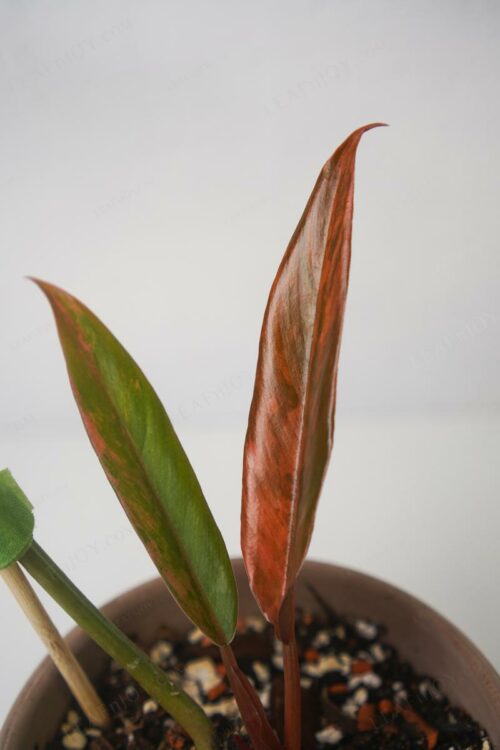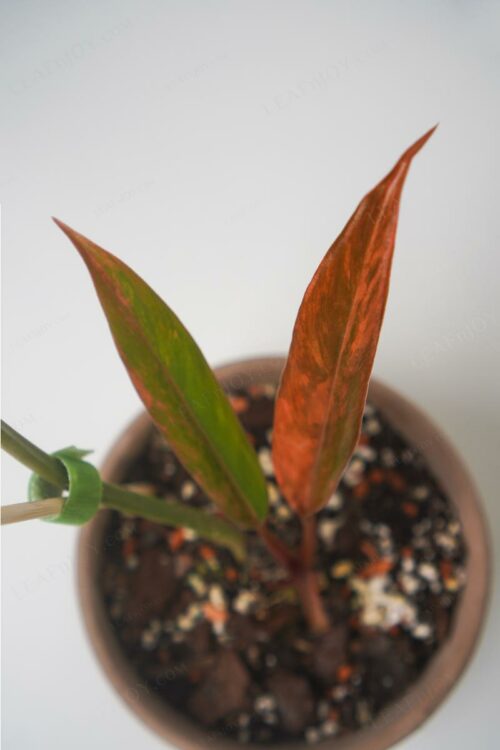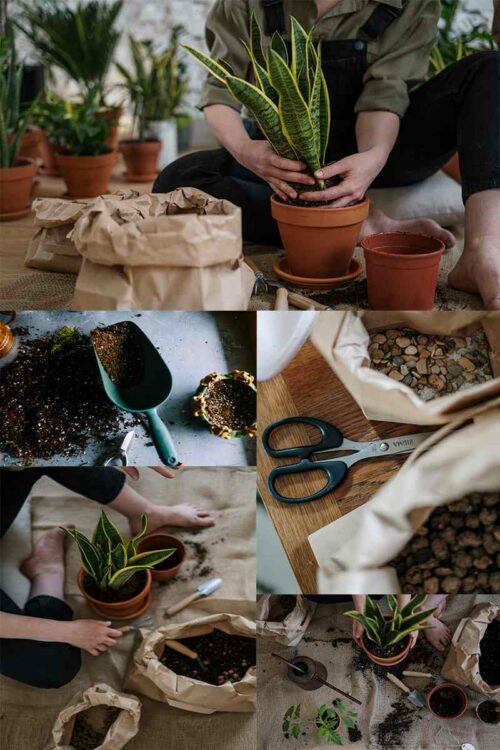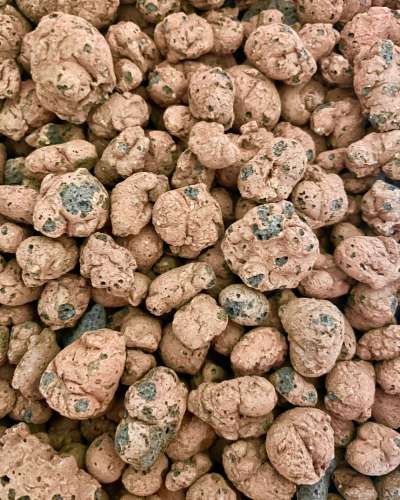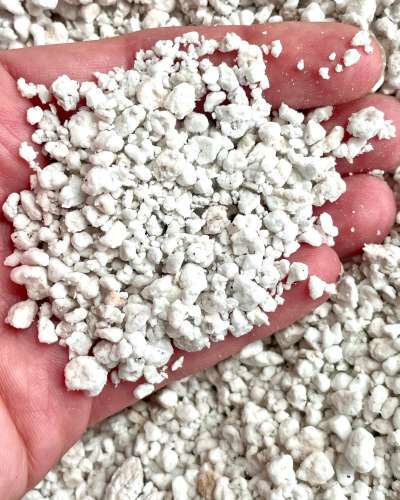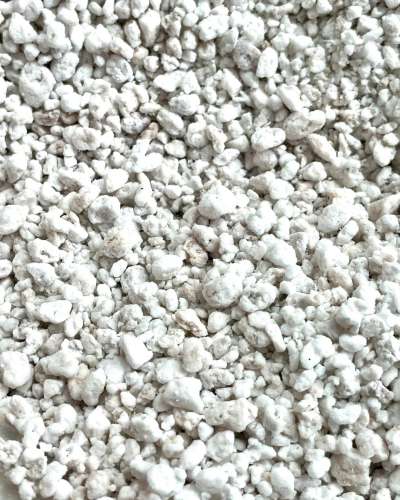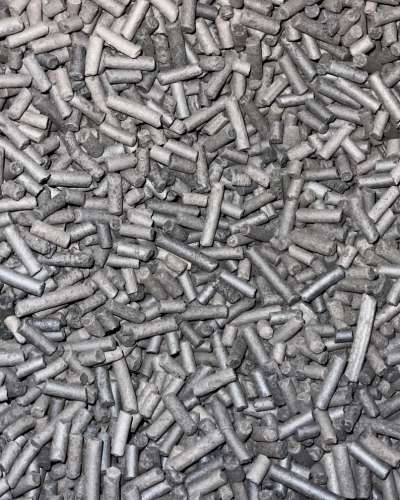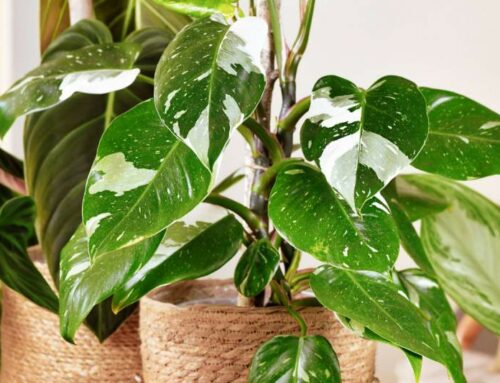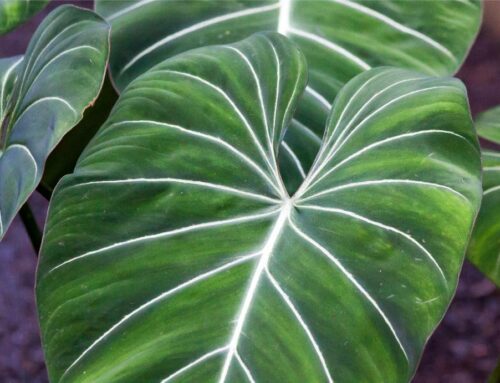How often to water a Philodendron Pink Princess? How to make the leaves of a Pink Princess more pink? How to propagate a Philodendron Pink Princess?
Wondering how to care for your gorgeous pink plant jewel, aka the Pink Princess Philodendron? I got you.
The Philodendron Pink Princess is hands down one of the most beautiful plants in the world.
I mean, who can resist these dark green (nearly black!) leaves with swatches of hot bubble gum or gentle pink variegation? And each leaf is unique like a fingerprint.
Sexy, right?
But the Pink Princess philodendron is not a stunner that is hard to please. On the contrary! These tropical plants are also easy to care for, low maintenance, can tolerate a little neglect, grow fast, are easy to propagate, and yes, you guessed it: are beginner-friendly houseplants. :)
If you’re looking for an easygoing plant that won’t need much attention or watering, but makes heads turn around thanks to its gorgeous pink variegation then the philodendron Pink Princess is the royal plant for you.
In this detailed Philodendron Pink Princess plant care guide, you will find everything you need to know to ensure that your pink beauty thrives when grown as an indoor plant so that you can enjoy its magnificent appearance at home with joy.
This post may contain affiliate links. Read our Privacy Policy and Disclosure here.
Philodendron Pink Princess Care – Overview
The main Pink Princess Philodendron care needs & requirements are summarized in the table below.
Common Names: Philodendron Pink Princess (PPP)
Origin: Unknown (Brazil)
Light: bright indirect to medium
Water: moderately
pH: 5.5 – 6.5
Repot: every 2 to 3 years
Temperatures: 16°C to 28°C (60.8 °F to 82.4 °F)
Humidity: 50% to 75%
Nutrition: balanced fertilizer (eg: 10-10-10) or fertilizer for orchids; a simple NPK fertilizer isn’t enough so ensure that micro elements are also included
Fertilize: 2 times/year with slow release fertilizer or monthly with a liquid fertilizer from March to September; don’t fertilize during the dormant season
Propagation: division, cuttings
Pests: spider mites, thrips, scale insects
Toxic? yes, if ingested
For a detailed guide on how to care for a Pink Princess Philo indoors, continue reading.
Philodendron Pink Princess Care – Detailed Plant Growing Guide
The Philodendron Pink Princess (or PPP in short) is a popular houseplant due to its unique foliage and easy care. The exact origin of these tropical plants is not known but it appears that they were man-made, i.e. cultivated.
So is the Philodendron Pink Princess natural? No.
The Pink Princess is a cultivar of the Philodendron Erubescens. I,e, the pink beauty doesn’t go far away from its original cultivar as the Latin word “erubescens” means blushing. The Philodendron Erubescens, thus, the Pink Princess are native to the rainforests of Brasil.
The leaves are oval-shaped and can grow up to 6 inches long. This plant does best in indirect bright light but can adapt to a low-lit location as well. The Pink Princess philodendron is so easy to grow that soon you might find your pink beauty has outgrown its pot.
Curious about the Philodendron Pink Princess origin? The mystery around how both the White Princess and the Pink Princess Philodendron were created remains.
1. How much light does a Philodendron Pink Princess need?
The light requirements of a Pink Princess philodendron are pretty straight forward: medium to bright indirect light will make these tropical plants the happiest.
Light is a super important factor when it comes to caring for a Pink Princess philodendron indoors. Light will not only affect the overall well-being and growth rate of this aroid plant but light can also influence the shade of pink variegation. How cool!
So how to trick your Pink Princess into producing leaves with bubble-gum pink colors?
In short, if you want your Philodendron Pink Princess (PPP) to have leaves with more pink – more light is the answer. But beware: more light does NOT mean harsh light!
A Philodendron Pink Princess will thrive in a location that receives medium to bright indirect light. Note the word ‘indirect’ here. If your PPP is exposed to direct sunlight (especially during the midday hours) – the leaves on your Pink Princess will burn from the excess exposure to light, resulting in scorch marks.
Exposure to harsh light, in our experience, also makes the pink color appear paler, i.e. looks as if it has faded away. And vice versa: medium to bright light results in a darker and stronger pink shade.
Can a Philodendron Pink Princess live in a low-light location? These tropical plants can also tolerate a low light location but let’s be frank: you don’t want to put a variegated in a location with low light.
Just a quick note: the variegated parts on variegated plants contain less to no chlorophyll compared to the purely green leaf sections. This means that a variegated plant requires more light to sustain itself and grow compared to a fully green one. Why? Because the variegated parts cannot photosynthesize efficiently (or not at all).
Therefore…
A low-light location will significantly reduce the growth rate of a PPP and might affect negatively the pink variegation (and don’t we all get pink plants so that they remain… pink?).
So where would be the best spot for your philodendron Pink Princess at home?
Think about the original growing environment of your Philodendron erubescens: a spot under the canopy in a Brazilian rainforest.
A spot close to a window that receives gentle morning or evening sun will be great for your Pink Princess. I.e. east or west-facing windows are just perfect for your PPP.
A North-facing window could work as well but you might need to supplement your Philo with a grow light during the winter season.
If you plan to place your Philodendron Pink Princess near a south-facing window, make sure to filter the light by using a curtain or a diffuser.
Tip: If you don’t have a free spot at your home that has natural light, you can always use a full-spectrum grow light for your Philodendron Pink Princess. In fact, during winter, when natural hours of light are less, supplementing your tropical plant with an artificial light source might result in the plant continuously growing, i.e. without taking a winter break.
Bonus: Can you grow a PPP outdoors?
Totally! If you plan to grow your Pink Princess Philodendron outside during the growing season, you can place it right in front of a wall or fence that faces North. Alternatively, position the plant under a large tree where it will never be exposed to any direct sun rays.
If you are unsure what “bright indirect light” means or how to find the ideal spot for your PPP at home, read our detailed Plants Light Guide.
2. How often to water a Philodendron Pink Princess?
When to water a Philodendron Pink Princess? prefers to be kept slightly moist but wet feet are a big no-go. Aim to always check the top 2-4cm (1-2 inches) of the growing media of your Pink Princess before watering your plant.
When it comes to how often to water a Philodendron Pink Princess there is not a one-size that fits all answer.
Dot. Or in German: Punkt.
Light, humidity, temps, potting media, the month, etc, are all factors that will affect how often your Pink Princess needs to be watered. And yes, the watering needs of your variegated beauty will also fluctuate with the seasons!
For example, when grown in a chunky, aroid potting mix, most Philodendron Pink Princess plants need to be watered roughly on a weekly basis during the growing season. When not actively growing, this frequency decreases considerably to about once every 10 to 14 days.
But again: do NOT water your PPP on a fixed schedule!
Your Philodendron Pink Princess will thrive in a potting media that is consistently moist but can also tolerate some drying between irrigation. They are forgiving plants and can understand if you got too busy and were a couple of days late with the watering. Happens to us all.
In fact, when in doubt about whether to water your Philodendron Erubescens or not – rather wait and check again in 2 days.
Why?
PPP are pretty tough plants but one thing that can absolutely destabilize them is being kept too wet. Rot-related issues can settle in quite fast if your Philodendron Pink Princess has wet feet so always check the moisture level of the potting media before watering your aroid plant.
Depending on the potting media that you are using for your PPP, a moisture meter might be able to work. Whenever the moisture meter shows a low-end middle level, i.e. a 4 on a 1 to 10 scale, it’s a good indication that your Philodendron Pink Princess needs to be watered.
Personally, we have found that moisture meters are unreliable for chunky, well-aerated mixes.
We, at LEAFnJOY, aren’t afraid to get dirty and much more prefer the finger method.
To test whether your PPP needs a drink or not, simply stick your index finger approximately halfway into the soil. About an inch to two (2-4 cm).
If the soil feels wet – wait and check again in about 2 days.
If it’s dry – water your Philodendron Pink Princess thoroughly until water starts dripping from the drainage hole and then stop.
Want to learn the main tips and tricks when it comes to watering plants? Then check out our detailed guide on Watering Plants 101.
3. What is the Best Potting Mix for a Philodendron Pink Princess?
Your PPP will thrive in a well-draining potting mix that holds water well but doesn’t become soggy and compact.
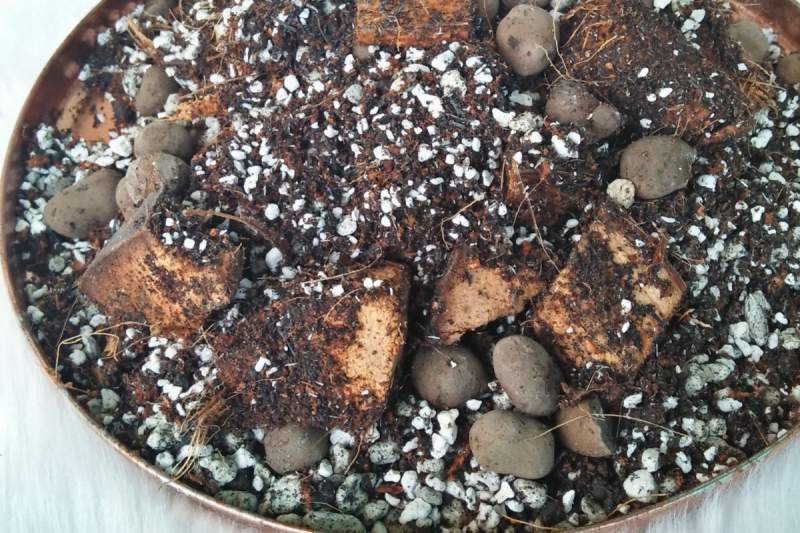
In other words, just like other Philodendron plants and aroids (Monstera, Epipremnum, Anthurium, Syngonium), your Pink Princess Philodendron needs a growing media that has been created with the needs of these tropical plants in mind.
If you are in a rush and don’t want to get dirty, we suggest trying our Aroid potting mix. It comes with a 3-month long-term fertilizer. I.e. making your PPP care even easier!
But if you are up for the adventure, here is a basic DIY soil recipe that will be suitable for a Philodendron Pink Princess:
Mix equal parts:
- Coir
- Bark
- Perlite
Optional: worm castings or slow-release fertilizer. Add a spoon of love and watch your PPP grow and thrive. :)
This mixture will allow excess moisture to drain through the bottom of the pot rather than sitting stagnant around the roots – much better for plant health!
If you want to try something new than the conventional plant in some dirt scenario, there are alternative growing media for your Pink Princess philodendron.
For example, you can grow your Philodendron Pink Princess in 100% sphagnum moss, in hydro or semi-hydro such as LECA or pon. Just don’t forget the nutrients!
Allowing enough aeration around the roots of your Philodendron Pink Princess is essential to keep the plant happy, healthy, and thriving. Thus, consider planting your PPP in a terracotta pot. When these clay pots are unglazed (important) they allow for better air permeability.
4. How to Fertilize a Philodendron Pink Princess
Philodendron Pink Princess plants tend to have a growth spurt once spring knocks on the doors, so these tropical plants will need to be regularly fertilized for as long as they are actively growing.
If you have freshly repotted your PPP, chances are that your plant already has some fertilizer inside so you might be good to go for the growing season without having to add any additional nutrition. On the other hand, if you know that the potting mix of your Philodendron Pink Princess is low on nutrients, you have a couple of fertilizing methods to choose from.
Whichever fertilization method you opt for (i.e. liquid vs slow-release), make sure that the fertilizer that you are using for your Pink Princess Philodendron is balanced and contains macro-and-micro-nutrients. Microelements such as iron, magnesium, and manganese are important for the overall health of a PPP.
For example, a balanced NPK fertilizer (10-10-10) or a 3-1-2 NPK one containing micronutrients will be a good choice for your Philodendron Pink Princess.
You can apply slow-release fertilizer or worm castings at the beginning of the growing season as a soil topping for your PPP. Depending on the fertilizer and on the suggested use by the label, you might have to repeat the application again during mid-summer.
Alternatively, you can also opt to use a liquid fertilizer for your PPP which you would need to apply more regularly, but the advantage is that you would have in this case more control over the nutrients that your Philodendron Pink Princess is up taking.
For instance, the easiest method to fertilize your PPP using liquid fertilizer is as follows: Feed Philodendron Pink Princess with a half-strength balanced liquid fertilizer once per month during the spring and summer months. Do not overfeed—if your plant’s leaves begin to look watery or pale, stop feeding it for a few months.
The other option that we prefer as the nutrients are gentler on the roots and the risk of fertilizer burn is less, is the ‘weakly weekly method’.
With this method, you add about ⅕ of the recommended fertilizer’s dose to your plant’s water every time you water for the first 3 times followed by a clean flushing watering that contains no nutrients.
Hint: Using bio-fertilizers (instead of salt-based chemical ones) is a better choice for these aroid plants as it decreases the risk of the plant’s roots burning due to salts contained in the fertilizers.
For optimal nutritional absorption for your Philodendron Pink Princess, we would suggest adjusting the pH of the water containing fertilizer to be between 5.8-6.2. Use a pH meter to measure it and modify it if needed.
Important: Whenever you are using a liquid fertilizer, always make sure that you apply it AFTER your PPP has been watered! Fertilizing a thirsty plant can result in root burn.
5. The Best Humidity Levels for Philodendron Pink Princess
The origin cultivar of PPP, i.e. the Philodendron Erubescens originates in the tropical rainforests. Therefore, the Philodendron Pink Princess will grow at its best when the humidity levels are between 50 to 80% with good air circulation.
However, you don’t need to fall into the humidity drama trap with the Pink Princess plants. Your PPP doesn’t need a rainforest to thrive, your PPP just needs to be acclimatized. Once acclimatized to normal room conditions, your Philodendron Pink Princess can live happily in whatever humidity you live in.
Will they love a humidity below 20%? No, they won’t. The only problem that might arise if the humidity suddenly drops and stays too low is that new leaves might have a hard time unfurling. Also, if the humidity levels suddenly drop too fast, the transpiration might speed up and if the plant is not able to compensate for the water roots from its roots, crispy, brown leaf edges or discoloration on some leaves might occur.
We have our PPP being stressed by humidity fluctuations mostly when there is extreme heat and when the temperatures suddenly drop and heaters are used to warm up a room.
With the help of a hygrometer, you can monitor and measure the humidity levels around your PPP. And decrease or increase it as needed.
We find that a humidifier is a great investment if one has a large plant collection but you also have other options to raise the humidity around your Philodendron Pink Princess.
For example, you can use a humidity tray (i.e. a pebble tray) and place your PPP on top. As the water evaporated, the atmospheric humidity level just below the leaves will increase by about 30% on average.
Alternatively, your Philodendron Pink Princess is a great bathroom plant to consider (if you have enough light in there for it!) as this tropical plant will absolutely appreciate the warm and humid bathroom environment.
Should you mist your Philodendron Pink Princess?
We would advise you against misting your PPP. Misting houseplants does little to raise the overall humidity and water droplets on the leaves are an open invitation to harmful pathogens making an entrance.
6. The Best Growing Temps for a PPP
The optimal growing temperatures and humidity for your Philodendron Pink Princess are closely related to the origin of its cultivar. The Philodendron Erubescens originates in the rainforests of South America. These tropical plants prefer warm and humid conditions for optimal growth.
The ideal growing temperatures for your PPP are between 60-80°F (16-27°C). This means that normal room temperatures are found for your Pink Princess and if you are located in zones 9-10, you can also grow these plants outdoors.
Whenever the environmental temps are in the higher range of the tolerance of a PPP, these aroid plants will respond by growing faster, and vice-versa – cold temperatures will slow down the growth rate of your Pink Princess Philodendron.
Are Philodendron Pink Princess plants resistant to frost?
These tropical plants are not frost-resistant and anything below 40°F (4°C) can result in cold damage.
On the other hand, extreme heat waves and temperatures above 97°F (36°C) will stress a Philodendron Pink Princess and might result in rot-related issues and wilting of leaves.
7. Philodendron Pink Princess: Staking & Prunning
Wondering whether it is better to grow the Pink Princess philodendron as a hanging or vining plant? To answer this question, we need to look at the growing pattern of this aroid.
Does Philodendron Pink Princess Climb? Philodendron Pink Princess is an epiphyte, this means that in its natural habitat, the plant would grow on top of larger plants and would vine onto tree trunks. And to top that: the PPP has the potential to be a really big plant!
These tropical plants can reach a whopping 25 inches of height, so unless you want your PPP to start crawling on the floor and losing balance, you need to stake your Philodendron Pink Princess asap. And since the leaves of the Philodendron Pink Princess can grow up to be 8 inches / 20cm (length) by about 5 inches / 13cm (width), that moss pole would have been all-time worth it when you look at the gorgeous dark green and pink foliage of your beauty.
In our experience, therefore, the Philodendron Pink Princess is definitely not suitable to be grown as a hanging plant and you would need climbing support for it.
In fact, it would be best if you use climbing support and teach your PPP how and where to grow from the very start while the plant is still juvenile. Unlike the Epipremnum (commonly known as Pothos), the stem of the Philodendron Pink Princess is not flexible, so once that stem grows in a certain direction there is practically nothing you can do to change the aesthetics of your PPP.
Coconut moss pole is a great choice to use for your pink princess to climb onto. Your PPP will in turn show its appreciation by growing even faster and by producing leaves that are larger and larger.
8. Should You Prune a Philodendron Pink Princess?
The Philodendron Pink Princess are notoriously known for activating multiple growth points (i.e. nodes) after being pruned. So if your PPP has outgrown its spot, don’t be afraid, and prune your plant away. The best would be if you opt to prune your philodendron in early spring so that it would have time to go over the initial stress and start growing again whilst still in the current growing season.
If you decide to prune your pink princess, make sure that you are always using disinfected garden shears. Wounding tissue on your PPP is the easiest way to introduce harmful pathogens into your pink beauty and you don’t want that. So yes, disinfect your cutting tool before and after each cutting.
So where to cut a Pink Princess Philodendron to prune the plant? Whenever you are pruning your philodendron, always cut right above a node. The nodes on a pink princess are not easy to see, but there are right where a leaf is attached to the stem. So when pruning your PPP, cut above this section and not directly into it to avoid injuring any, otherwise-healthy, nodes.
How will a cut PPP plant continue growing? Once pruned, your philodendron will most likely continue growing from its highest available node. But as I mentioned, when it comes to PPP, they are known to start growing from multiple nodes at once after being cut down so enough for the vigorous growth spurt!
Pruning can help you keep the PPP variegation going: An added bonus of pruning your Philodendron Pink Princess regularly (apart from keeping it in shape!) is that if your plant has started shooting only green or only pink leaves, you might be able to reset it and more balanced leaves will have a chance to grow.
9. How to Replant (Repot) a Philodendron Pink Princess
Does Philodendron Pink Princess like to be rootbound? These tropical plants usually don’t become overly dramatic once their pot becomes a tad bit too small but eventually, the plant might start to suffer if it becomes truly pot-bound. A pot-bound PPP will show signs that she’s not too happy by some oldest leaves turning yellow and the new growth will be visible smaller.
Philodendron Pink Princess plants usually need to be repotted once every 1 to 2 years. Whenever you have decided to upgrade the pot of your PPP, always choose the next size one. Okay, maximum 2 sizes bigger.
Remember how I mentioned that these plants hate wet feet? If you pot your Philodendron Pink Princess in a pot that’s way too big for the rootball, the plant might not be able to drink the water in a timely manner.
Whenever repotting your philodendron, use a potting mix that is chunky and well-aerated, while at the same time providing adequate moisture. An aroid potting mix would be great for your PPP.
Also, consider using a terracotta pot for your pink princess, your tropical plant will appreciate the extra aeration around the roots!
Repotting a plant is stressful for them and a lot of people repot their plants too early and without any actual need. That’s why make sure to read our detailed guide on how to repot your houseplants correctly and when to is the best time to do it.
10. How to Propagate Philodendron Pink Princess

The easiest way to propagate Philodendron Pink Princess is by taking cuttings or in some cases, when the plant grows from multiple nodes – by division.
We have a detailed guide on how to take cuttings and do your best to increase the chances of them rooting successfully so make sure to check our article on Propagation From Cuttings.
In short, to propagate your PPP by cuttings, you need to start by disinfecting your cutting tool (eg: garden shears or a knife) and of course, by deciding where you would like to cut your philodendron to propagate it.
- We would advise (if possible), to always take large enough cuttings that have at least 3-4 nodes. The extra nodes are as a precaution should one of them fail to root. The nodes on the philodendron Pink Princess are hardly visible, but they are located where the leaf petiole is attached to the stem.
- Once you got all prepared, cut just above the node that you will leave on the mother plant. Making a cut as low as possible after a node ensures that you will have adequate time to react should your cutting start suffering from rotting problems.
- After the cuttings have been separated, allow them to form a callus by air-drying them for a couple of hours. This waiting time is important as your PPP needs some time to close the wound. Immediately proceeding with propagation without allowing for the cut end to callus increases dramatically the chances of rot issues and the cutting dying.
- Once the wound has formed a callus, place the stem cuttings into water, moistened perlite, damp sphagnum moss, or in a chunky potting mix to root. Make sure that the last node on the stem is covered. Keep the cutting well hydrated and in a warm location where it receives bright, indirect light. Increasing the humidity a notch (whilst ensuring good air circulation), can speed up the rooting.
How long do Philodendron Pink Princess cuttings take to root? In about 4-5 weeks, your PPP cuttings should have started rooting.
When to plant PPP cuttings in soil? Once the roots are sufficiently large, i.e. there are feeder as well as the main root present and they are at least 4-6cm (1-2inches), you can either pot the cuttings (if rooted in water) or grow them hydroponically.
How to Propagate Philodendron Pink Princess from Divison:
As mentioned, if your PPP is throwing some vigorous growth, in some cases you might be able to propagate your tropical plant by separating sections that have their own root system and active growth.
Need more help with your PPP propagation? Check out our detailed guide on how to propagate plants from division.
But in short: To propagate a Pink Princess Philodendron by division, using a disinfected knife, PPP sections with leaves and roots are separated. Afterward, the plantlets can be planted separately in a well-draining, moisture-retaining potting media. The young ones should be kept warm and in a bright location.
Added bonus:
Another way to propagate Philodendron Pink Princess is by tissue culture, which involves growing shoots on sterile agar gel medium under controlled conditions such as those found in laboratories that grow microorganisms like bacteria or fungi for scientific research purposes such as producing vaccines against diseases like polio (polio vaccine).
11. How to Identify & Treat Pests on Philodendron Pink Princess
The most common pests on philodendron pink princess are aphids when the plant has been grown outdoors.
If your Pink Princess Philo is growing indoors then scale, thrips and spider mites might start attacking your PPP.
All of these sucking insects damage the plants by sucking out sap from healthy leaves or stems. If you suspect even the slightest bit that your Philodendron Pink Princess might be dealing with pests, you should take immediate action against them to prevent further damage and a full-blown infestation.
Pests on Philodendron Pink Princess are manageable if caught early on, so if you suspect that something might be off with your PPP, check our guide on how to identify pests and get rid of them so that they won’t disturb your houseplants.
12. Philodendron Pink Princess: Common Plant Issues
Here is a list of common plant care problems that you might face as a parent to a Pink Princess Philodendron.
Droopy Leaves
If you notice that the leaves on your PPP start looking droopy, the reason is usually either water or temperature related.
If the leaves on your Pink Princess feel limp, the pot is light and the soil feels dry, your PPP is most likely trusty. Give your plant a good drink and it should perk up in a matter of hours.
If your PPP has droopy leaves, the potting media, however, is wet, there are leaves turning yellow and an off-mushy smell, then your philodendron might have been overwatered. Try to increase the light, temperature, and air circulation around your plant to help the soil speed up the drying.
If your PPP starts looking worse after a couple of days, the plant’s roots might be suffering from rot due to overwatering or lack of light. In this case, check our detailed guide on how to treat and prevent rot on plants in the future.
If there are sudden heat waves where the Philodendron Pink Princess is, the leaves might be droopy as the result of high temperatures and physiological stress. These plants also don’t do well with direct wind so make sure to protect your PPP from direct exposure to drafts.
If you suspect that your Philodendron Pink Princess is dealing with rot, make sure to check our detailed guide on identification and treatment of rot issues in plants straight away as these common houseplant problems are manageable if caught early on, so don’t delay.
Brown Leaf Edges
Brown Leaf edges on a PPP are usually caused by humidity stress.
I.e. if the humidity suddenly drops around your Philodendron, the plant might react to it and some leaves might get brown crispy edges.
To keep the humidity stable around your plant, consider a humidifier or a pebble tray.
Spots on Leaves
If you have excluded 100% that the spots on your PPP are not caused by pests, then you might be dealing with a fungal problem.
The most common fungi to attack aroid plants is the rust fungus. Rust fungus actually appears as circular leaf lesions on the leaves of philodendron plants leaving noticeable marks.
If you suspect that your PPP might be dealing with a fungi problem, use a copper-based fungicide and try to avoid splashing water on the plant’s leaves. If possible, remove any affected leaves and immediately dispose of them.
Leaves not Unfurling
A common problem that many owners of Philodendron Pink Princess (and other philodendron plants) face is that the new leaf gets stuck in the petiole and is not able to unfurl and open on its own.
This results in broken or otherwise deformed leaves if the plant owner doesn’t take measures on time and doesn’t physically get the stuck leaf out.
The most common reason for leaves getting stuck in Philodendron Pink Princess plants is low or unstable humidity levels around the plant while the new leaf is trying to grow. This issue can be corrected by stabilizing the humidity levels by using a humidifier or a pebble tray.
Another reason why sometimes leaves just don’t unfurl is a lack of balanced nutrients. That’s why it’s important that the fertilizer you are using for your Philodendron Pink Princess has both macro- and micro-nutrients and that the pH of the growing media is around pH 6.
Strange Deformations on Leaves
Although the cause is not exactly clear, if your PPP was a tissue culture plant, it is possible that at one point or another you might notice the scorch marks that TC philodendron plants have been notorious for.
It’s believed that whenever a TC plant is cloned numerous times, there are some DNA malformations due to the extensive copying process.
These leaf scorches are not a disease per se and cannot affect your other plants or the general health of your PPP.
Brown spots on variegated parts
Naturally, the variegated parts on a Philodendron Pink Princess are the most beautiful ones but also: the plant’s weakest parts. This means that whenever your PPP is under some sort of stress, the plant will try to remove anything it can’t efficiently use by killing off variegated sections to ensure its survival.
Luckily, unlike the Monstera Variegata, the Pink Princess Philodendron isn’t temperamental and rarely (if ever), will yours too start throwing a tantrum and destroying its pink parts.
There are different causes of leaves turning yellow on plants. Read our detailed guide on how to find the reason of leaves turning yellow on your Pink Princess Philodendron and how to correct the environmental factor so that your PPP can thrive again.
13. Is Philodendron Pink Princess toxic?
If you have a gorgeous Pink Princess specimen, you might be now wondering: is it safe to place the plant at a hands-reach distance? Is philodendron pink princess toxic to cats? Or at all?
Unfortunately, your stunning Philodendron Pink Princess is toxic to you, your cat, your dog, and your baby. This is because these tropical plants contain insoluble calcium oxalate crystals hat can cause irritation of swollen.
Keep your PPP away from direct reach of pets and curious little hands.
Philodendron Pink Princess: Frequently Asked Questions
Is Philodendron Pink Princess rare?
Once a rare jewel, the Pink Princess philodendron is not considered a rare plant anymore. You probably won’t find one in a common supermarket or in a garden center. This is because these plants have been massively reproduced through tissue culture due to the high demand for them.
Why is the Philodendron Pink Princess so expensive?
Alright, so they are massively produced but why is the PPP still so expensive? Think quality over quantity. Even though the Pink Princess Philodendron is not a rarity per se, what is hard to find nowadays is a plant that has stunning, balanced variegation.
Can the Pink Princess Philodendron revert?
The variegation on the PPP is not stable. This means that, unfortunately, the Philodendron Pink Princess (like other variegated plants) can revert.
This can happen in two different ways: the pink parts instead of pink might be a mere burgundy color or the plant growing green, non-variegated leaves.
How do you keep Philodendron Pink Princess Pink?
Provide your PPP with plenty of bright indirect light to trigger the plant to produce leaves with more variegation. Avoid any harsh sun rays, however, as the foliage of these tropical plants might burn fast.
Alternatively, if your PPP is growing mostly green or mostly pink, you can prune the plant to try to trigger growth from a node that has more balanced variegation.
How many types of Philodendron are there?
The Philodendron genus is part of the Araceae family (commonly called aroid plants). Currently, there are more than 400 different known Philodendron species out there.
Where to buy Philodendron Pink Princess?
Philodendron Pink Princess Care: Final Thoughts
Philodendron Pink Princess is a low-maintenance houseplant that will do well in the right environment. It can tolerate low-light environments but needs medium to bright indirect light to grow vigorously and to trigger stronger variegation patterns.
The philodendron pink princess is a beautiful houseplant that is easy to care for. The most important thing to remember is that it needs bright light, but not direct sun. Make sure that you are watering your plant regularly and fertilizing it with a liquid fertilizer once per month during the spring and summer months to keep it happy and healthy!

